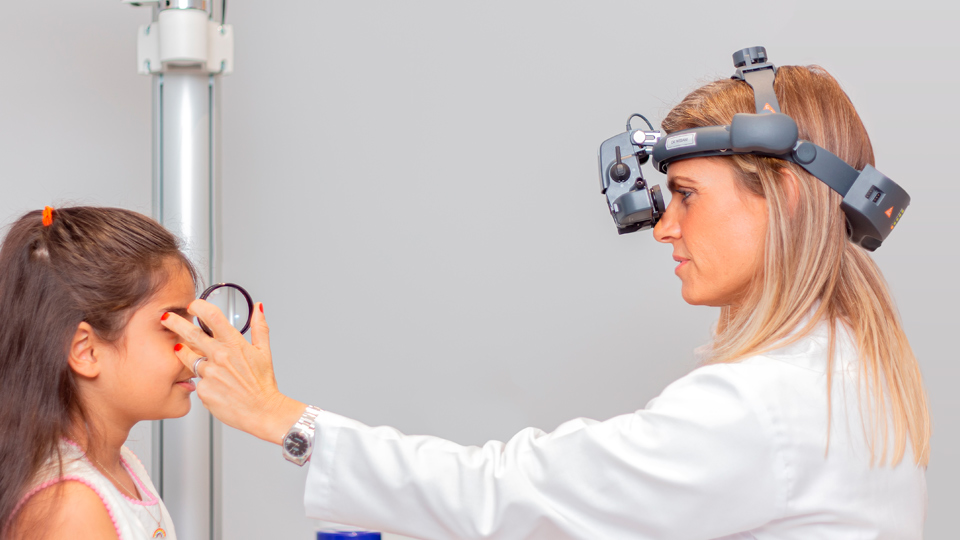How to Protect Your Eyes from Sandstorms and UV Damage in the UAE
18/04/2025

22/08/2024
It is important to do regular eye checkups? the answer is YES.
In children the importance of periodic check-ups is even more important, kids tend to complain very rarely, they adapt to everything around them, they are resilient by nature, as parents we have the duty and obligation to try to detect treatable diseases such as amblyopia (lazy eye), refractive errors, such as myopia, hyperopia and astigmatism as well as other diseases such as allergies, dry eye keratitis, etc.
At what ages should we perform eye exams?
In newborn children
It is essential that ophthalmological check-ups in newborns are carried out when determined by the pediatrician, especially if the baby was born premature or underweight. This is because they are at greater risk of developing visual diseases such as congenital cataracts or ocular hypertension. At these stages, doctor cannot assess visual acuity, but can confirm equal and normal red reflex, normality of the eyelids, the anterior part of the eye, including crystalline, cornea, iris, anterior chamber, and the posterior part of the eye the retina if there is indication.
The eyes in the first year of a baby's life
In these first months of life the objective is to assess the refraction of the child and analyze the state of both eyes and the retina, the position and alignment of the eyes, confirm if all structures inside the eye are in normal limits and are equal between both eyes. If any pathology is found, should be treated immediately to avoid the development of intractable amblyopia or lazy eye.
Reviews in children from 1 to 3 years
In this age group, children are much more cooperative when performing ophthalmological tests. At this age we can make a comprehensive eye assessment even if they are completely asymptomatic. This examination includes visual acuity, refraction, refraction under cycloplegia, assessment of the complete anterior part of the eye and the retina, position of the eyes, extraocular movements necessary to diagnose strabismus and lazy eye.
Ophthalmological examination between 3 and 8 years
From the age of 3, visits to the ophthalmologist focus on controlling and preventing certain pathologies, ocular motor skills and visual acuity. At this time is important to follow the school performance, the asthenopia or headaches to relieve the symptoms that can be caused by refractive issues.
Ophthalmological examination in adolescence
Adolescence is, without a doubt, a period of changes and development that can cause the development of refractive errors. The current overuse of electronical devices, in schooltime and also in leisure time obligates them to focus a for long time daily. It is important to assess their visual acuity, refraction and eye strain is turning more important than ever at this stages of the life, this will require adapting the glasses with some frequency. Therefore, it is recommended to perform periodic check-ups, especially if the young person has frequent headaches, blurred vision but even if they are asymptomatic.
The review in patients between 20 and 40 years
In these decades, graduation stabilizes, and it is a good time to consider refractive surgery treatment, which allows correcting myopia, hyperopia and astigmatism. Also, complains such us dryness and eye strain related to working with computers or laptops full working time are common. The eye strain and the dry eye that previously was frequently in older ages, currently is in younger patients.
Ophthalmologists recommend periodic vision checks to detect changes in prescription, control intraocular pressure and analyze the fundus of the eye to rule out possible diseases such as glaucoma or macular changes.
After the age of 40, loss of accommodation and presbyopia begin to appear, making the onset of reading and short distance difficulties a common cause of consultation. Also, at this age is mandatory to assess the eye pressure and also see the retina to role out pathologies associates ad high blood pressure, cholesterol and diabetes.
Beyond the age of 60-70, degenerative diseases such as cataracts or age-related macular degeneration appear, which may not cause initial symptoms and must be controlled as soon as they are detected.
In conclusion, throughout life it is advisable to do eye exams to detect not only refractive defects and poor vision, but also treatable ophthalmological diseases that are sometimes asymptomatic and should not be underdiagnosed.